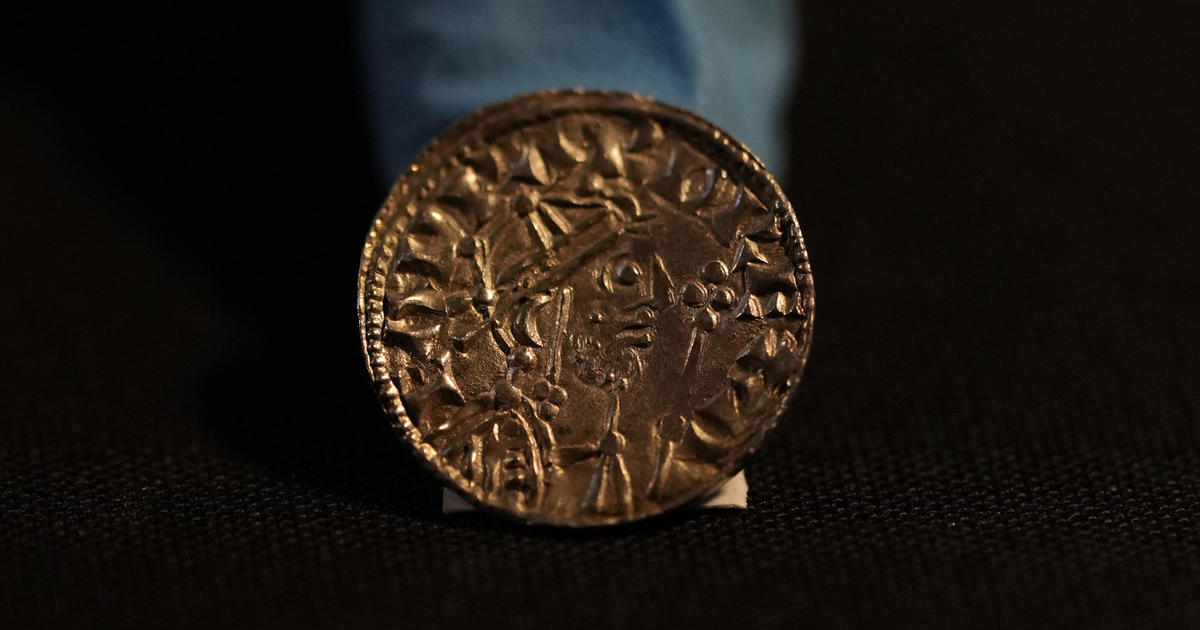The discovery of a significant hoard of Anglo-Saxon silver coins in southwest England has captivated the historical and archaeological community. Unearthed by a team of amateur metal detectorists, this remarkable find—consisting of over 2,500 silver pennies—offers unprecedented insight into the tumultuous period following the Norman Conquest of 1066. The coins, minted between 1066 and 1068, represent a pivotal moment in English history, challenging long-held assumptions and illuminating the complexities of this transformative era. This article delves into the details of the discovery, its historical significance, and the impact it has had on our understanding of the Norman Conquest.
The Discovery and its Significance
A Fortunate Series of Beeps
The discovery itself is a testament to the serendipitous nature of archaeological finds. Adam Staples, an experienced metal detectorist, stumbled upon the hoard while searching a farmer’s field. What initially appeared to be a few scattered coins quickly escalated into a massive discovery as more and more coins were uncovered. The sheer number of coins, over 2,584 in total, shocked even seasoned experts. The find was immediately recognized as exceptionally significant, surpassing expectations and proving to be a truly remarkable achievement in the world of amateur archaeology. Staples, along with six other friends, initially thought it might include only 5-10 coins, showing just how significant the discovery truly was.
The Valuation and Acquisition
The sheer monetary value of the Chew Valley Hoard (as it’s now known), estimated at £4.3 million ($5.6 million USD), underscores its historical importance. This substantial financial assessment reflects not only the intrinsic value of the silver but also the coins’ unique historical significance. This prompted acquisition by the South West Heritage Trust. The acquisition process, involving the Treasure Act, involved declarations, valuations, and a financial agreement between the landowner and the finders, resulting in a considerable sum for the detectorists and a significant contribution for the heritage trust. The final result ensured the coins would remain available for historical research and public exhibition, securing their status as invaluable cultural artifacts. This meticulous process emphasizes the importance of safeguarding national heritage within the UK.
Historical Context: Rewriting the Norman Conquest
Challenging the Narrative
The Chew Valley Hoard provides a compelling lens through which to examine the Norman Conquest, an event typically portrayed as a straightforward replacement of one ruling power by another. The coins themselves challenge this simplistic narrative. While minted during the transition of power, the design differences are subtle. This reflects that there was still social and economic continuity between pre- and post-Norman Conquest England, adding nuances to the historical narrative and shifting our perception of the degree of change brought about by William the Conqueror’s invasion.
A More Nuanced Perspective
The coins depict both William the Conqueror and Harold II, signifying the overlapping reigns and the coexistence of Norman and Anglo-Saxon influence during this turbulent period. Furthermore, the presence of coins bearing the inscription “pax,” meaning “peace,” adds layers of irony to the historical interpretation, highlighting the complexities and the relative peace amidst the political upheaval. The discovery prompts a reconsideration of the commonly held belief that the Norman Conquest was a brutal imposition. Rather, the hoard suggests a more complicated story with complex alliances and interwoven fates among those involved in the power struggle.
Implications and Future Research
Unraveling the Mystery
The remarkable find helps illuminate the events surrounding the conquest in the years after the Battle of Hastings in 1066. The careful examination of these coins is expected to deliver key insights into the early years of Norman rule, helping researchers better understand the social and economic impacts of the transition. The hoard provides crucial physical evidence to reconstruct daily life amidst post-conquest unrest and shed light on a period of England’s history where the sources are sparse, fragmented or difficult to interpret.
Public Access and Legacy
The Chew Valley Hoard is destined for public display, ensuring that this treasure is accessible to researchers and the public alike. The decision to place the hoard at the Museum of Somerset ensures that the historical significance of this find remains firmly rooted in the region where it was discovered. Further research promises deeper understandings of 11th-century England’s history and economy, leading to greater comprehension of the impacts of William the Conqueror and beyond.
The Amateur Archaeologist’s Contribution
The discovery highlights the significant role amateur archaeologists and metal detectorists play in uncovering historical artifacts. Adam Staples and his team’s discovery is proof of the value of dedicated community involvement in safeguarding and promoting history. Their commitment, along with a collaboration with established archaeologists and researchers, helped make this significant contribution possible. This points to how public participation can make valuable contributions to broader archaeological and historical knowledge.
Take Away Points:
- The Chew Valley Hoard, a discovery of over 2,500 silver pennies from the period of the Norman Conquest, is a significant archaeological find.
- The hoard challenges traditional narratives of the Norman Conquest, suggesting a more nuanced picture of political and social transition.
- The coins provide invaluable insight into the economic and social conditions in England during the years immediately following the Battle of Hastings.
- The discovery highlights the important contribution of amateur archaeologists and the collaborative nature of archaeological research.
- The hoard’s acquisition and eventual public display emphasize the importance of protecting and sharing national heritage.









